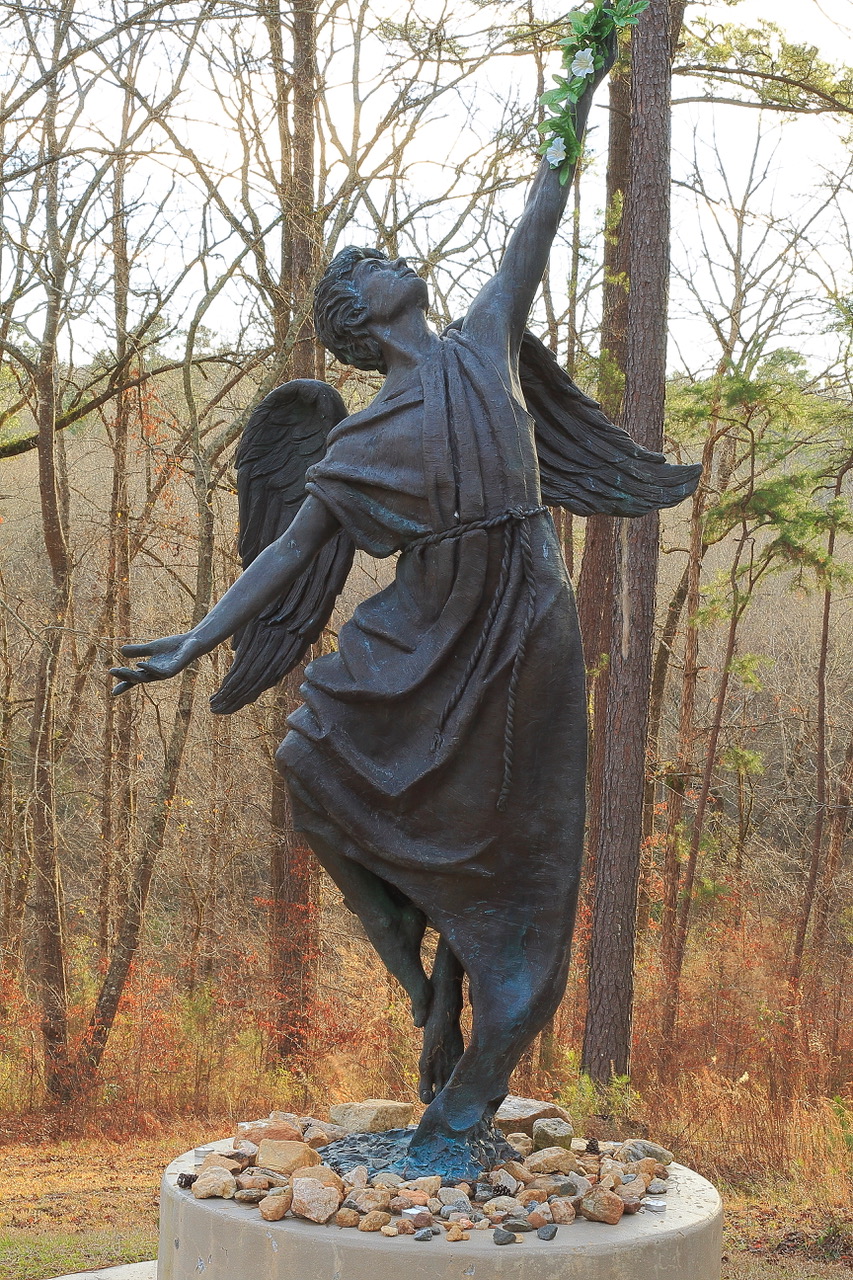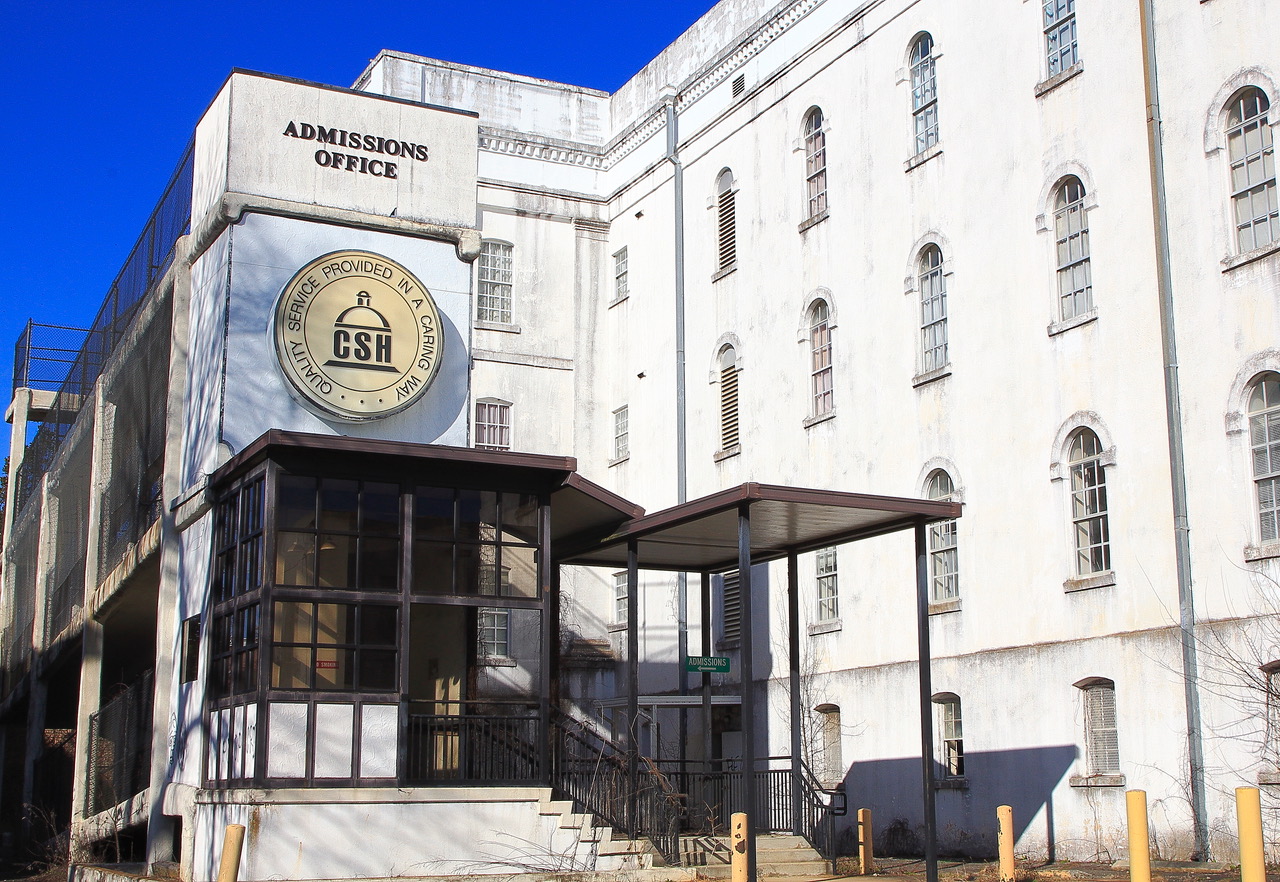We’re Sending You To …
May 3, 2023By Tom Poland
In the 1960s my father visited the Central State Hospital in Georgia. He may have gone to visit a relative. I recall a heated family gathering in the dining room. A relative had the family up in arms. I was just a boy but I remember my father refused to sign documents sending the relative away. Perhaps the rest outvoted him. Regardless of why he went, he saw a terrible sight at the old mental institution. He looked through a window and saw people playing with their excrement.
But something else made the place more frightening, something dark. In the 1950s, if your family so decided, they could send you to that place with the terrifying name … Milledgeville.”
—
The name wormed its way into my brain. All my life I heard of it in sinister tones of voice. I didn’t set eyes on Milledgeville until January 26, 2023. I was driving to Macon to speak to the Georgia Huguenot Society. I decided to stay in Milledgeville just so I could visit the notorious Central State Hospital. For two afternoons I explored this infamous institution. What I saw shocked me in a strange way.

Full Angel Statue: Guardian for the anonymous dead.
The road to hell is paved with good intentions, in this case managing mental illness and the craziness that attends it. The asylum started in 1837, an era when blunt words ruled the day. Georgia lawmakers authorized a “Lunatic, Idiot, and Epileptic Asylum”—how’s that strike you, politically correct? Before you judge, be thankful you live today and not then and not near Milledgeville.
The actual opening took place in 1842. How big was it? Well, at one point it was the world’s largest mental institution. One hundred years after its opening, 200 buildings sprawled over 2,000 acres. Today, with its star magnolias and pecan orchard, columned ruins, waterless fountains, wreathes, and decaying timbers and broken windows, it evokes a campus where faculty, administrators, and students—dead all—walk around as ghosts. As evidence, a prop from Halloween, a macabre woman, hung from the second story’s balcony. A college campus that’s what it looked like and it shocked me in a strange way. Where was the football field?
Buzzards circled the place as old men gathered pecans in a grassy rectangle. The quad, if you prefer, sits near the Jones Building, down a ways from the Powell Building, the main administration-patient building designed to look like the US Capitol. And it does. Draw your own conclusion.

Admissions Office—Where the end began for many.
That sunny afternoon I heard nothing but wind, birds, and traffic driving through the grounds, but I knew howls and screams had echoed throughout some buildings. It was a place of electroshock therapy, lobotomies, and other ways to set minds right. Like putting kids in metal cages and strapping folks in straightjackets. “Be still. Let me tighten this a bit more.”
Some suffered disabilities. A lot of people ended up here that shouldn’t have. Some exhausted their family’s patience and off they went to that terrible place of just one name.
Milledgeville.
Here’s a story from an anonymous soul. “My grandfather committed suicide at Milledgeville. Back in the ’40s and ’50s, it was not difficult to get someone involuntarily committed to a mental hospital. One of my grandmother’s sisters had my grandfather committed to Milledgeville. After a few years, he hung himself. I never met him. I think I was five or six when he committed suicide. The family never talked about it. I didn’t discover the facts until I was in my 20s. I’m not sure my grandmother ever forgave her sister. I have always wondered if, with modern medicine, he would have ever had to go there.”
—
I found the cemetery where some 25,000 nameless people were buried with numbered markers. In explanation, I read this: “Some 2,000 cast-iron markers at Cedar Lane Cemetery commemorate the 25,000 patients buried on the hospital grounds. The markers, with numbers instead of names, once identified individual graves but were pulled up and tossed into the woods by unknowing prison inmates working as groundskeepers to make mowing easier.” —Doug Monroe, Atlanta Magazine

Bronze Markers: Displaced by those mowing grass.
I know the place did some some good, and friendships and romances formed there but that’s hard to believe when you drive past the fan of cast-iron markers that create illusions, when you drive through iron gates with gold angels, down Cedar Lane to the bronze angel guarding the dead. Someone had placed a quarter in her right hand. Her other hand, reaching skyward, held a garland of flowers … artificial.
It was time to go. As the sun sank, I stopped at the Admissions Office where a sign proclaimed “Quality Service Provided In A Caring Way.” I daresay some families let out a sigh of relief upon parking there, but for many sad souls that office had the most feared steps in Georgia. For many, it was the end of the line.
Georgia native Tom Poland writes a weekly column about the South, its people, traditions, lifestyle, and culture and speaks frequently to groups in the South. Governor Henry McMaster conferred the Order of the Palmetto upon Tom, South Carolina’s highest civilian honor, stating, “His work is exceptional to the state.” Poland’s work appears in books, magazines, journals, and newspapers throughout the South.
Visit Tom’s website at www.tompoland.net
Email him at [email protected]




















